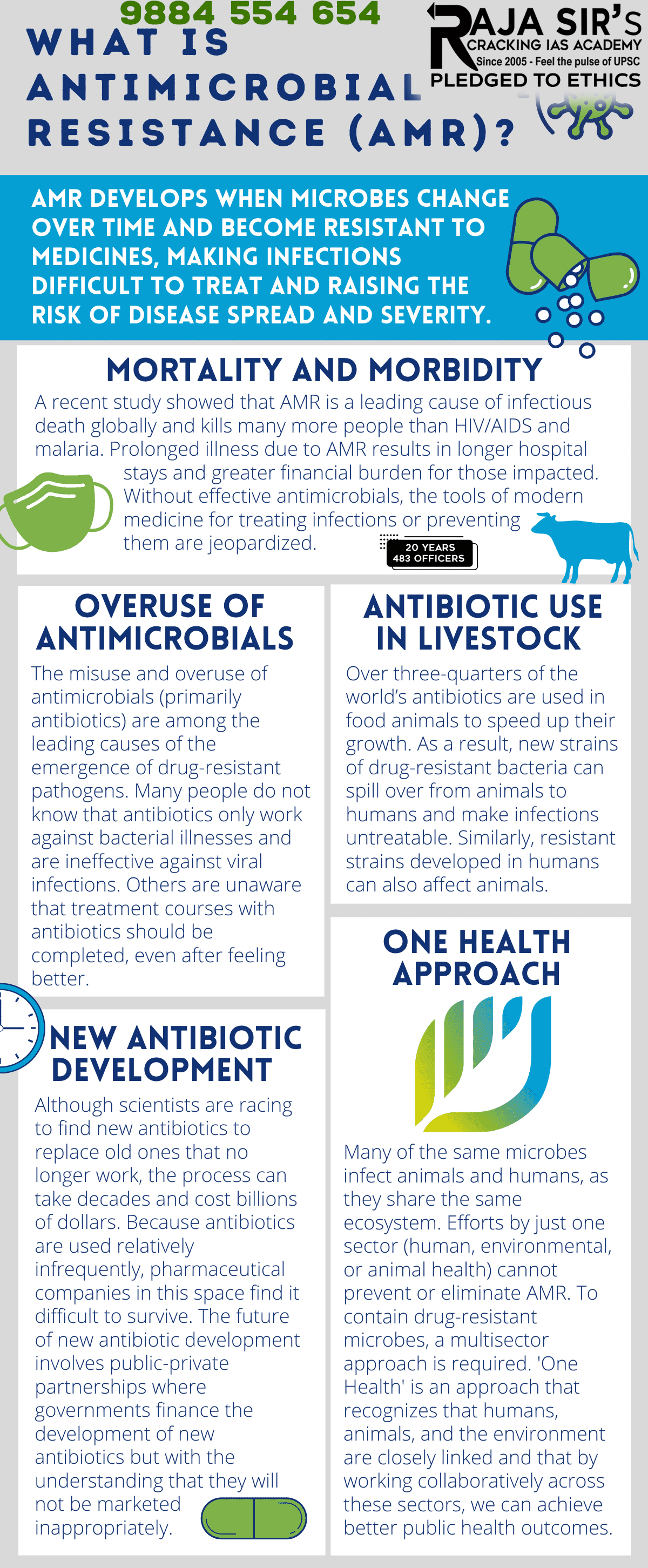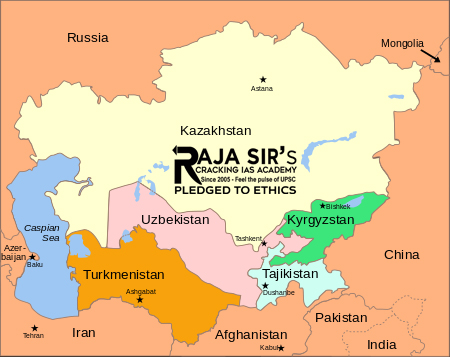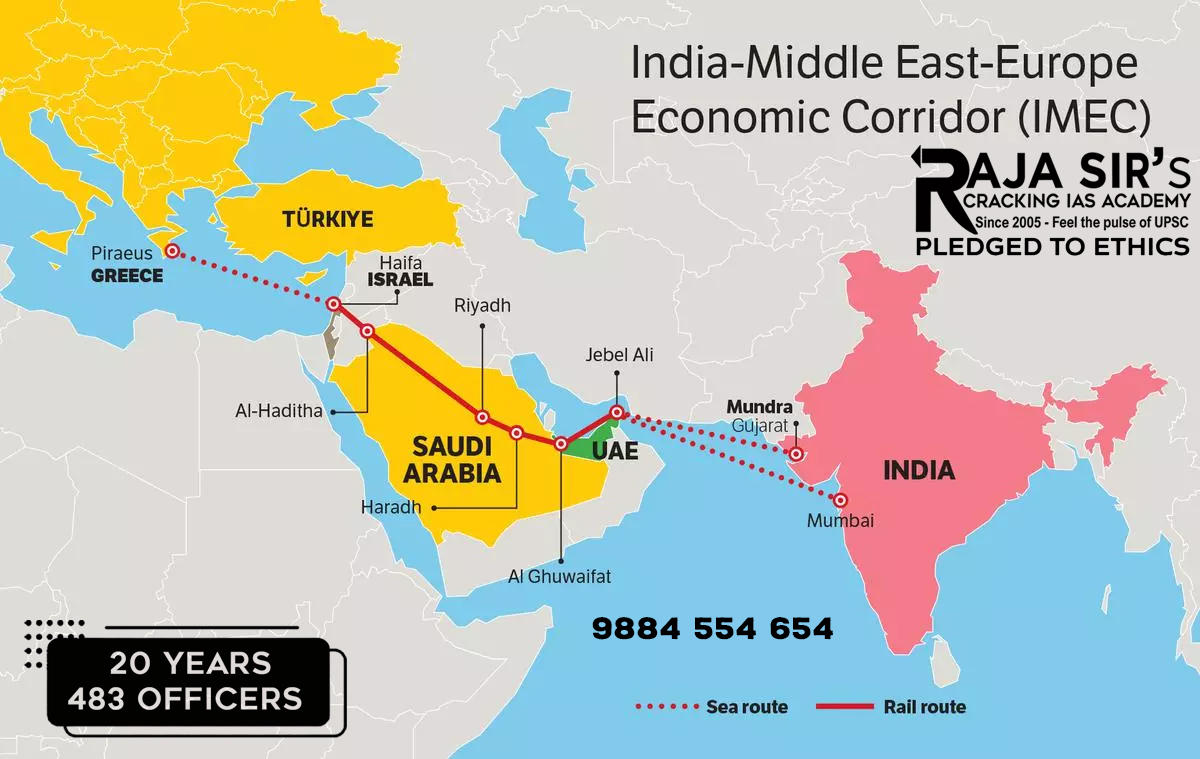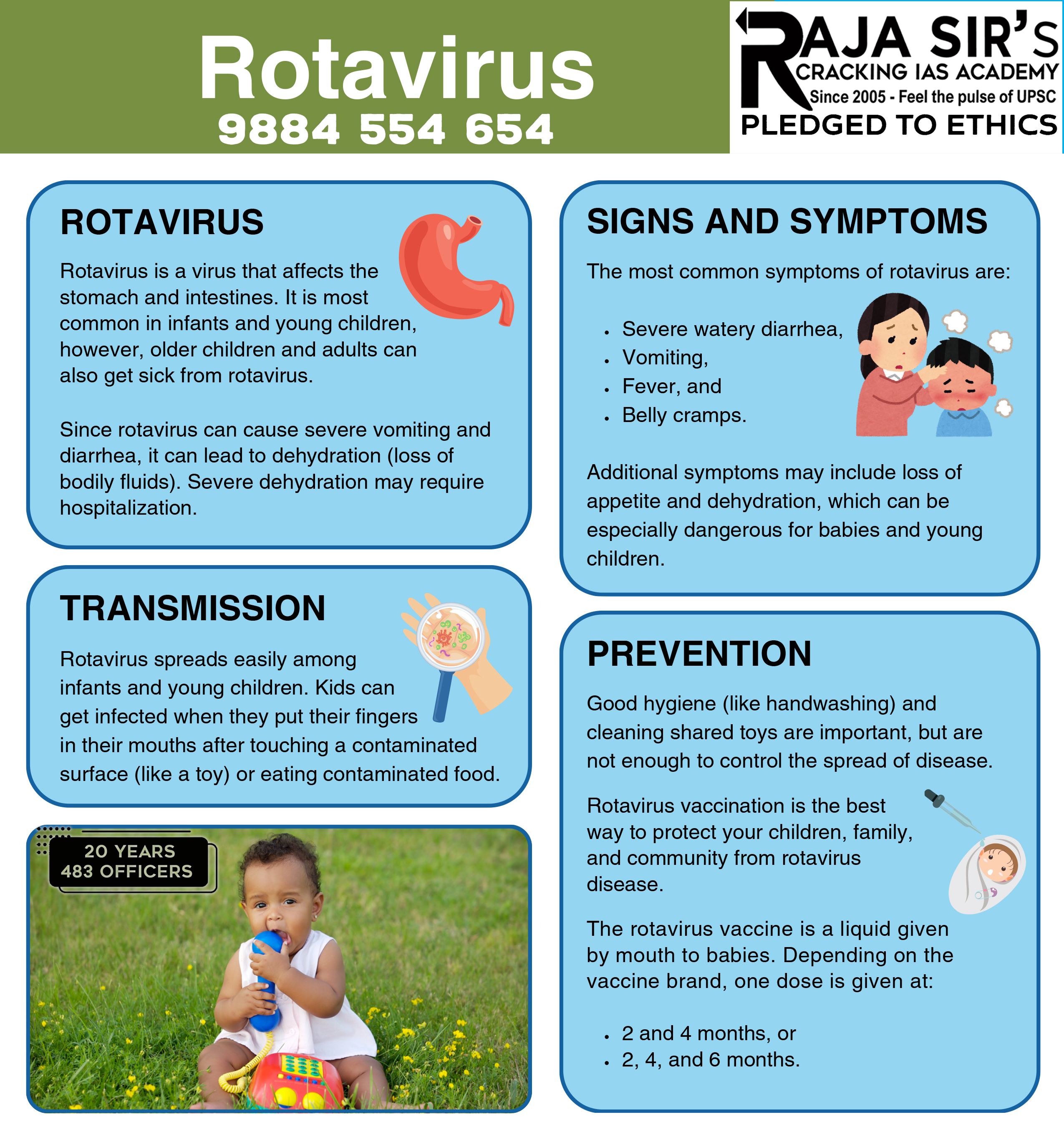- Home
- Prelims
- Mains
- Current Affairs
- Study Materials
- Test Series
OCTOBER 19, 2025
SC Expands Scope of Public Trust Doctrine
The Supreme Court expanded the Public Trust Doctrine to cover artificial waterbodies in a ruling concerning Nagpur’s historic Futala Lake.
Public Trust Doctrine
- The Public Trust Doctrine is a legal principle that holds the government as a trustee to protect specific natural and cultural resources for public use.
- Objective: To promote intergenerational equity through the sustainable use of resources.
- Evolution: The doctrine originated in Roman law and evolved through English Common Law.
- Indian Adoption: It was formally introduced into Indian environmental jurisprudence in the M.C. Mehta v. Kamal Nath (1997) case.
- Constitutional Basis: It is anchored in Article 21 (Right to Life) and Article 48A (State’s duty to protect and improve the environment).
|
Landmark Judgements Related to the Doctrine
|
Godda Thermal Power Plant
- The Ministry of Power has approved Adani Power Limited (APL) to connect its Godda Ultra Super Critical Thermal Power Plant in Jharkhand to the Indian power grid.
Key Highlights of the Plant
- The Godda plant was declared an SEZ in March 2019 and has since supplied electricity exclusively to Bangladesh under a bilateral power purchase agreement.
- The plant will be linked to India’s Inter-State Transmission System (ISTS) through a Line-In Line-Out (LILO) connection of the Kahalgaon A-Maithon B 400 kV line.
- The Power Ministry invoked Section 164 of the Electricity Act, 2003, granting APL the same rights as a telegraph authority under the Indian Telegraph Act, 1885, for laying overhead lines.
- The transmission line will traverse 56 villages in Godda and Poreyahat tehsils, requiring clearances from local bodies, Railways, and highway authorities.
Regulatory Amendments
- The Ministry amended the 2018 Guidelines for Import/Export of Electricity to permit domestic linkage.
- The Central Electricity Authority (CEA) modified procedures to facilitate cross-border power flows.
- The Central Electricity Regulatory Commission (CERC) revised General Network Access (GNA) and cross-border trade regulations to allow standby connectivity.
Rising Antibiotic Resistance
- The WHO Global Antibiotic Resistance Surveillance Report (2025) warns that 1 in 6 bacterial infections globally (2023) were resistant to antibiotics.
- Between 2018–2023, antibiotic resistance rose in >40% of pathogen–antibiotic combinations, with an annual increase of 5–15%, signalling an accelerating global health emergency.
|
Antimicrobial Resistance (AMR)
|
Key Findings from the WHO Report
- Scale of Resistance: 16% of lab-confirmed infections were antibiotic-resistant in 2023. Resistance is highest in South-East Asia & Eastern Mediterranean Regions — 1 in 3 infections are resistant.
- Most Affected Pathogens: E. coli, K. pneumoniae, Acinetobacter spp., Salmonella spp., Shigella spp., Staphylococcus aureus, Streptococcus pneumoniae, N. gonorrhoeae. (8 Major Bacteria)
- Drug-Resistance Pattern: >40% of E. coli and >55% of K. pneumoniae are resistant to 3rd-generation cephalosporins (mainline antibiotics).
- Poor Diagnostics: 48% of countries didn’t report data to GLASS (Global AMR Surveillance System).

Yunus Declares a ‘New Bangladesh’ Through National Charter
- Bangladesh’s interim government chief and Nobel laureate Muhammad Yunus signed the ‘July National Charter’, declaring it the “birth of a new Bangladesh.”
- It includes over 80 reform proposals, spanning governance and electoral restructuring, signed by 25 political parties.
- The declaration marks a major political transition following the 2024 student-led uprising that overthrew Sheikh Hasina’s Awami League government.
India-Central Asia Security Dialogue
- National Security Advisor (NSA) Ajit Doval participated in the 3rd ‘India-Central Asia NSA/Secretaries of the Security Councils’ Meeting in Bishkek, Kyrgyzstan.
- Established at the 1st India-Central Asia Summit in 2022, it promotes cooperation on security & counterterrorism among India, Kazakhstan, Kyrgyzstan, Tajikistan, Turkmenistan, & Uzbekistan.
- The meeting supports India’s ‘Connect Central Asia’ policy by promoting regional cooperation and lasting strategic engagement with the five Central Asian republics.

India–Kyrgyzstan Bilateral Relations
- Diplomatic Evolution: India and Kyrgyzstan established diplomatic relations in 1992 and elevated them to a Strategic Partnership during PM Modi’s 2019 visit to Bishkek.
- Trade Relations: Bilateral trade reached ~$120 million in 2024, led by Indian exports of pharmaceuticals, machinery, and textiles, while Kyrgyzstan supplies raw hides and wool.
- Connectivity Corridors: India seeks to access Kyrgyzstan through the Chabahar Port and the International North–South Transport Corridor (INSTC), bypassing Pakistan.
- People-to-People Ties: Over 17,000 Indian students study medicine and technology in Kyrgyzstan. The 2022-26 Cultural Exchange Programme promotes artistic collaboration.
- Regional Forums: Both countries cooperate in the Shanghai Cooperation Organisation (SCO) and the India-Central Asia Dialogue on counterterrorism, energy security, and sustainable development.
- Defence Cooperation: India and Kyrgyzstan conduct the annual Khanjar Special Forces Exercise to improve joint capabilities in counterterrorism and mountain warfare.
- Challenges: Limited transport connectivity, China’s Belt and Road Initiative (BRI), and Afghan instability continue to impede stronger trade and strategic engagement.
Future Prospects of India–Middle East–Europe Economic Corridor (IMEC)
- The West Asian conflict post-October 2023 and shifting global trade routes (like the Arctic passage) have raised concerns about IMEC’s viability and strategic direction.
IMEC
- The IMEC, announced during the G20 Summit 2023 (New Delhi), aims to link India with Europe via the Middle East through a mix of rail, port, digital, and energy infrastructure.
- It will span from India to Europe through India, the UAE, Saudi Arabia, Jordan, Israel, and Greece.
- Indian ports that will be connected to IMEC are Mundra (Gujarat), Kandla or Deendayal Port (Gujarat), and Jawaharlal Nehru Port Trust (Navi Mumbai).
- It is a counter to China’s Belt and Road Initiative (BRI). The corridor is estimated to cut the time from India to Europe by 40% and slash transit costs by 30%.
Challenges Faced by the IMEC Project
- West Asia Conflict: Gaza war and Israel–Arab tensions disrupt project timelines and trust.
- Security Risks: Houthi attacks in the Red Sea raise maritime vulnerability.
- Infrastructure Gaps: Missing multimodal links across the Saudi Arabia–Jordan–Israel route.
- Funding & Implementation: Absence of a dedicated financing framework like AIIB or NDB.
Way Forward
- Adaptive Routing: Explore alternate ports (Jeddah, Dammam, Suez) to bypass conflict zones (align with IMO safety routes 2025).
- Multilateral Financing: Establish IMEC Fund under G20 India–EU Partnership.
- Green Corridor Development: Link with the EU’s Global Gateway Green Energy Projects and India’s National Green Hydrogen Mission.
- Institutional Mechanism: Formalise IMEC Secretariat under G20’s Connectivity Agenda 2030.

Central Bank Digital Currencies
- At the IMF–World Bank Annual Meeting, RBI Governor Sanjay Malhotra urged central banks to promote CBDCs instead of stablecoins for cross-border payments.
|
CBDC is a sovereign, digital form of fiat money issued and regulated by a central bank, whereas Stablecoins are private cryptocurrencies pegged to assets like the US dollar to maintain price stability. |
Significance of Promoting CBDCs Over Stablecoins
- Monetary Sovereignty: CBDCs protect domestic control over money supply; RBI warns US-dollar stablecoins could trigger rupee dollarisation (RBI Report 2024).
- Cross-Border Efficiency: CBDCs can cut remittance costs by 50% compared to SWIFT (BIS 2025).
- Regulatory Transparency: Unlike $285 bn volatile stablecoin market, CBDCs ensure KYC compliance and legal tender backing.
- Technological Edge: Tokenised CBDCs retain stablecoin-like benefits (programmability, low latency) but with state-backed security and legal tender status.
|
Tokenised CBDC refers to a digital form of central bank money represented as secure blockchain-based tokens, enabling instant, programmable, and traceable transactions. |
Challenges of Replacing Stablecoins
- Limited Global Adoption: CBDC systems still lack standardisation and coordination among central banks. Only 19 central banks have pilot-stage CBDCs (IMF Tracker 2025.
- Cybersecurity: Increased digitalisation raises cybersecurity vulnerabilities. Over 60% of central banks cite cyberattacks and surveillance risks as major CBDC concerns (BIS 2025).
- Dominant Stablecoin Market: Private stablecoins like Tether (USDT) and USDC dominate 90% of the $285 bn market, influencing policymakers globally (IMF, 2025).
Way Forward
- Global CBDC Corridors: India should join the BIS mBridge project (UAE–China–Thailand–Hong Kong) to enable real-time, low-cost, and secure cross-border CBDC settlements.
- Tech–Policy Convergence: Adopting the IMF’s XC platform will help establish common standards and interoperability for CBDCs across jurisdictions.
- Cyber Resilience: Implement the FSB 2025 Cyber Resilience Framework and deploy AI-driven fraud detection and encryption systems to safeguard digital currency infrastructure.
- Awareness & Trust: Under the RBI Digital Rupee Mission, enhance financial literacy and user adoption. Currently, only 26% of Indians understand the basics of CBDCs (FIS Survey 2024).
Natural Farming and Gender Inequality
- Experts warned that India’s natural farming policies, while promoting sustainability, risk reinforcing gender inequality by overlooking feminisation of Agriculture.
- National Women Farmers’ Day & International Day for Rural Women are observed on October 15.
|
Gender Dimensions in Agriculture
|
National Mission on Natural Farming
- Aim: Promote chemical-free, resource-efficient, biodiversity-based farming.
- Approach: Agroecology principles of Beejamrut, Jeevamrut, Ghanajeevamrut.
- Implementing agency: Ministry of Agriculture & Farmers’ Welfare.
- Model State: Andhra Pradesh Community Natural Farming (APCNF).
- Governing Vision: “Farmer-led, local resource–based, low-input agriculture.”
- Issue of Gender Inequality: Policy is blind to gender, omitting it entirely, while Krishi Sakhis are included only as activity-based para-extension workers without secure employment.
E-Waste Recycling Through Urban Mining
- India generates 1.75 million tonnes of e-waste (2023–24), which is 16% of Europe’s total, highlighting massive untapped potential for urban mining and critical raw material (CRM) recovery.
|
Urban mining is the process of recovering valuable materials from waste, such as electronic devices, construction debris, and other discarded products. |
- E-waste: 1.75 million tonnes in 2023–24 (↑72.5% since 2019–20).
- Recycling rate: Improved from 22% (2019–20) → 43% (2023–24).
- Metals recovered per tonne: Gold: 300 g, Silver: 1 kg (Circular Economy Report, 2023)
Significance of Urban Mining in E-Waste Recycling
- Economic Value: Proper urban mining could yield ₹20,000–₹25,000 crore annually (CPCB, 2024).
- Green Jobs: Urban Mining can generate 5 lakh new jobs in recycling sectors (NITI Aayog Report).
- Critical Resource Security: Reduces import dependence on strategic minerals; India imports 90% of the lithium and cobalt used in EVs and electronics.
- Circular Economy Boost: Turning urban waste (1.75 MT e-waste + 62 MT municipal waste) into reusable resources supports SDG-12 (Responsible Consumption and Production) & Mission LiFE goals.
Challenges Faced in Urban Mining
- Technological Gaps: India lacks high-end CRM extraction and smelting infrastructure; only 468 authorised recyclers with 1.6 MT capacity (CPCB, 2024) vs. 3 MT generation.
- Fragmented Governance: MoHUA handles urban sanitation; MoEFCC manages waste rules.
- Poor Segregation: <25% source segregation limits composting & recycling. (CPCB 2023)
- Informal Sector Neglect: ~15 lakh waste-pickers excluded from formal systems.
- Financial Gaps: Urban local bodies recover < 20% of user charges for solid waste services (NIUA 2023).
Way Forward
- Urban Mining Parks: Establish regional CRM recovery hubs for high-value materials. E.g. Japan’s Eco-Town Model and China’s Urban Mining Bases.
- Circular Economy Push: Promote reuse, repair, and recycling through a national circular resource strategy. E.g. NITI Aayog – Circular Economy Action Plan (2021)
- Formalise Informal Sector: Integrate waste-pickers via cooperatives and SHGs for safe livelihoods. E.g. ILO Green Jobs Initiative and Swachhata Start-up Challenge
- Digital Waste Mapping: Use AI, GIS, and IoT for waste flow tracking and collection optimisation. E.g. Smart Cities Data Command Centres
- Unified Waste Authority: Merge responsibilities of MoHUA and MoEFCC under a single nodal body similar to the EU Waste Framework Directive (2008)
|
International E‑Waste Day falls on October 14, with a focus on critical raw materials and responsible e-waste recycling to conserve resources and reduce environmental harm. |
Time Rondeau Crystal (TRC)
- Scientists have discovered a new phase of matter known as a time rondeau crystal (TRC), where order and disorder coexist in time.
|
Phases of Matter It is a specific form that a substance can take, based on how its particles (atoms and molecules) are arranged and move. The most common phases are solid, liquid, and gas. Other phases include plasma, Bose–Einstein condensates, and now, time crystals and TRC. |
Time Rondeau Crystal (TRC)
- A TRC is a type of time crystal where atoms move in a repeating pattern in time, but also shows irregular, random variations between these repetitions.
- A time crystal is a state of matter with a repeating pattern in time, without randomness.
- Discovery: TRC was created using diamond-based quantum systems under controlled conditions.
- Significance: TRC challenges the idea that temporal order exists only in strictly periodic systems, expanding the concept of ‘order’ in physics and advancing quantum computation.
Rotavirus Vaccine Effectiveness
- A study on the effectiveness of the indigenous rotavirus vaccine, Rotavac, in India found significant reductions in rotavirus-based gastroenteritis nationwide.
|
Rotavirus-based gastroenteritis is an inflammation of the stomach and intestines caused by rotavirus infection, leading to severe diarrhoea, vomiting, fever, and dehydration in children. |
Key Findings
- Effectiveness: Rotavac showed 54% effectiveness against severe rotavirus gastroenteritis under routine immunisation conditions.
- Hospitalisation: Hospital admissions for severe rotavirus infections among children under five declined significantly following vaccine introduction.
- Infection Rate: The number of hospitalised children testing positive for rotavirus fell from 40% before vaccination to 20% after rollout,
Rotavirus
- Rotavirus is a contagious double-stranded RNA virus that mainly spreads through the fecal-oral route.
- Global Burden: It is the leading cause of severe childhood diarrhoea worldwide, with India accounting for nearly one-fifth of global rotavirus-attributed deaths.
- Available Vaccines: Two main vaccines exist—Rotarix, a monovalent vaccine (protecting against one strain) and RotaTeq, a pentavalent vaccine (protecting against five strains).
Rotava
- Rotavac is an indigenously developed oral rotavirus vaccine launched in 2012 and introduced into India’s Universal Immunisation Programme (UIP) in 2016.
- Three doses of the vaccine are given at 6, 10, and 14 weeks of age.
- It was developed through a public–private collaboration among the Department of Biotechnology, Bharat Biotech, and international partners.
- Significance: It is India’s first indigenous rotavirus vaccine, marking a major milestone toward self-reliance (Atmanirbhar Bharat).

ACTCM Barge LSAM 25
- The Indian Navy inducted its 11th Ammunition Cum Torpedo Cum Missile (ACTCM) Barge, LSAM 25 (Yard 135), at the Naval Dockyard in Mumbai.
|
Barge: A large flat-bottomed vessel used for transporting heavy cargo along inland waterways or ports. LSAM: Landing Ship Ammunition is a type of barge used to transport ammunition and missiles safely. |
- LSAM 25 enhances Navy logistics by supporting the transport, embarkation, and disembarkation of ammunition at both jetties and outer harbours.
- Built By: MSME shipyard M/s Suryadipta Projects Pvt. Ltd., Thane, under Ministry of Defence contract.
- Significance: The ACTCM series highlights India’s increasing defence indigenisation, aligning with the Make in India and Aatmanirbhar Bharat initiatives.
India’s Gold Reserves Cross $100 Billion
- India’s gold reserves exceeded $100 billion for the first time in history, driven by a 65% rise in global gold prices during 2025.
- Reserve Share: Gold’s share in India’s total forex reserves rose to 14.7%, marking its highest proportion since 1996-97.
- RBI Purchases: Despite rising valuations, the RBI added only 4 tonnes of gold from January to September 2025, compared to 50 tonnes in 2024.
- Global Drivers: Record-high gold prices reflect central banks’ diversification away from the U.S. dollar amid geopolitical tensions and increasing de-dollarisation.
- Reserve Composition: As of October 2025, India’s reserves consisted of 82% foreign currency assets, 14.7% gold, 2.7% Special Drawing Rights, and 0.7% IMF Reserve Tranche Position.
Dinosaur Superhighway
- Palaeontologists recently uncovered a dinosaur trackway in Oxfordshire, England, displaying footprints from Sauropods like Cetiosaurus and Theropods such as Megalosaurus.
- Jurassic Site: This site, nicknamed the “dinosaur superhighway,” provides insights into dinosaur coexistence, locomotion, and behavioural ecology during the Middle Jurassic era (166 million years ago).
- Trackway Scale: It features a 220-meter-long trackway likely made by Cetiosaurus. This is the largest known sauropod trail in Europe.
- Global Highways: Other well-known dinosaur highways include Dinosaur Valley State Park (Texas, USA), Dinosaur Ridge (Colorado, USA), Cal Orck’o (Bolivia), and La Rioja (Spain).
|









 Latest News
Latest News
 General Studies
General Studies